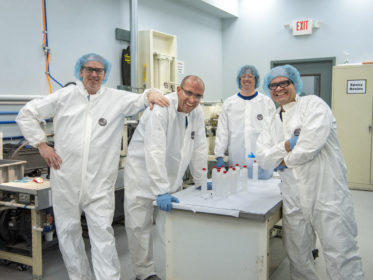
You spend a lot of time and money searching for, interviewing, and then hiring a new skilled employee. But much to your surprise and consternation, the new employee tells you a few weeks or months later he or she is leaving for another job.
“What happened?” you think. “I thought we had a great fit.”
A new hire can leave for many reasons, but one of the more common reasons is a non-welcoming culture, which you, as the business owner or manager, may not know about or understand.
For example, a company’s culture can be divided between “new people” and employees who’ve been around for years or “since the beginning.” This divide creates an “us versus them” atmosphere and unintentionally makes new people feel unwelcome and less valued.
Or, a new employee, who was hired for their fresh insight and ideas, might be rebuffed on the shop floor with “this is how we’ve always done it” — an attitude which shuts down innovative thinking and solutions.
As the business owner or manager, understanding your culture and its effect on employees and how they work is crucial to retaining them.
Create a process for welcoming new employees
One manufacturer we worked with learned, through direct feedback and employee surveys, that new hires, and those assigned to train them, were running into serious issues.
New hires received a brief orientation, and then began training. The problem was, the people assigned to train them had to meet their production deadlines, too. Because the training happened sporadically, new hires felt uncomfortable and quickly lost confidence; established employees were stressed and felt put-upon. No one was happy.
To combat this challenge and others, the manufacturer created a process for welcoming new employees. After orientation with HR, the new employee is now escorted by the company owner and introduced to everyone in the office and on the production floor. The owner gives an overview of the company as well as its history.
The new employee also undergoes safety training; once this is complete, lunch is ordered in honor of the new employee and everyone in the company is invited to partake in the cafeteria. The biggest change is each new hire is assigned to someone who provides dedicated training.
With these changes, the culture within the company underwent dramatic change. Morale and teamwork dramatically improved, and everyone began to feel like part of a team. Most important, new hire turnover dramatically declined.
Create a respectful environment
Being open to new ideas isn’t something that happens on its own — it’s an attitude and approach that has to be communicated and cultivated over time.
Companies often have a set of unwritten assumptions and biases on how things work. For established employees, who’ve internalized this unwritten culture, these biases make it difficult to see things differently.
For employees coming in with new ideas, being told “this is the way things are” can be deadly. To combat this, one manufacturer began using the term “fresh eyes” and communicating what it meant and why it was valued. “Fresh eyes” empowered employees to try new things and consider alternatives.
Over time, employees began using “fresh eyes” as a term of respect — e.g. “Sue provided fresh eyes for this problem and solved it,” or “The new guy Jim brought fresh eyes to our process and saved us two steps.”
Communicate unwritten rules
To communicate culture to new employees, company owners and managers need to have overt conversations with current employees. For example, discuss the important but unwritten “rules” new employees need to know:
- Is the cream in the break-room refrigerator for common use or does each person bring their own?
- Do production employees start work at 7:30 AM on the dot, or do they have a few minutes leeway?
- Does the company recycle all plastics and frown on anyone who puts these items in the trash?
These small but significant items are part of your culture — and need to be communicated during orientation or during the first weeks of a new hire’s tenure.
Once you’ve hired new people, be sure to check in with them regularly. Ask how they’re doing and if they have any questions. Over time, begin to ask how they want to grow and develop in order to keep them motivated and interested – and working for you versus someone else.




